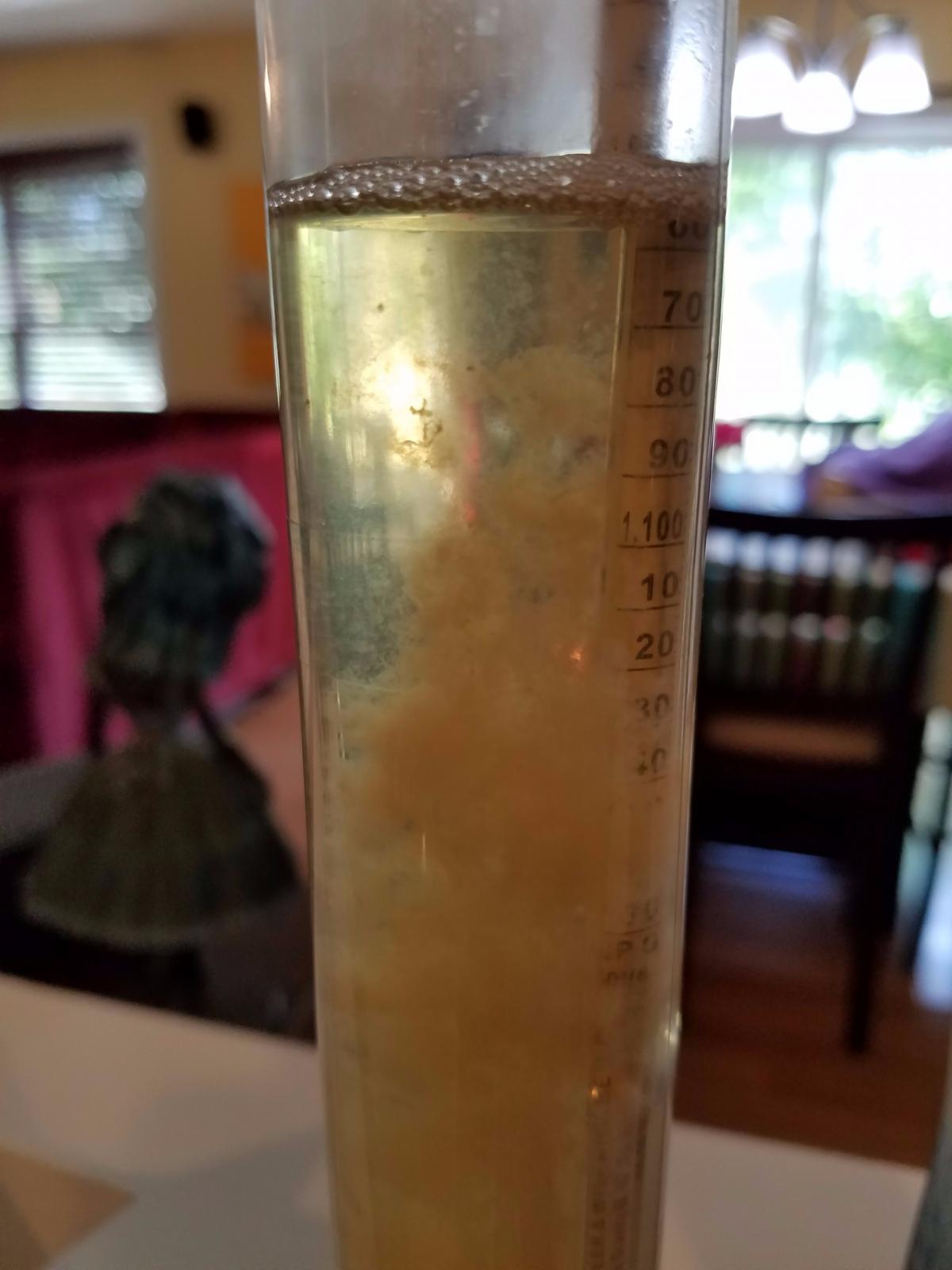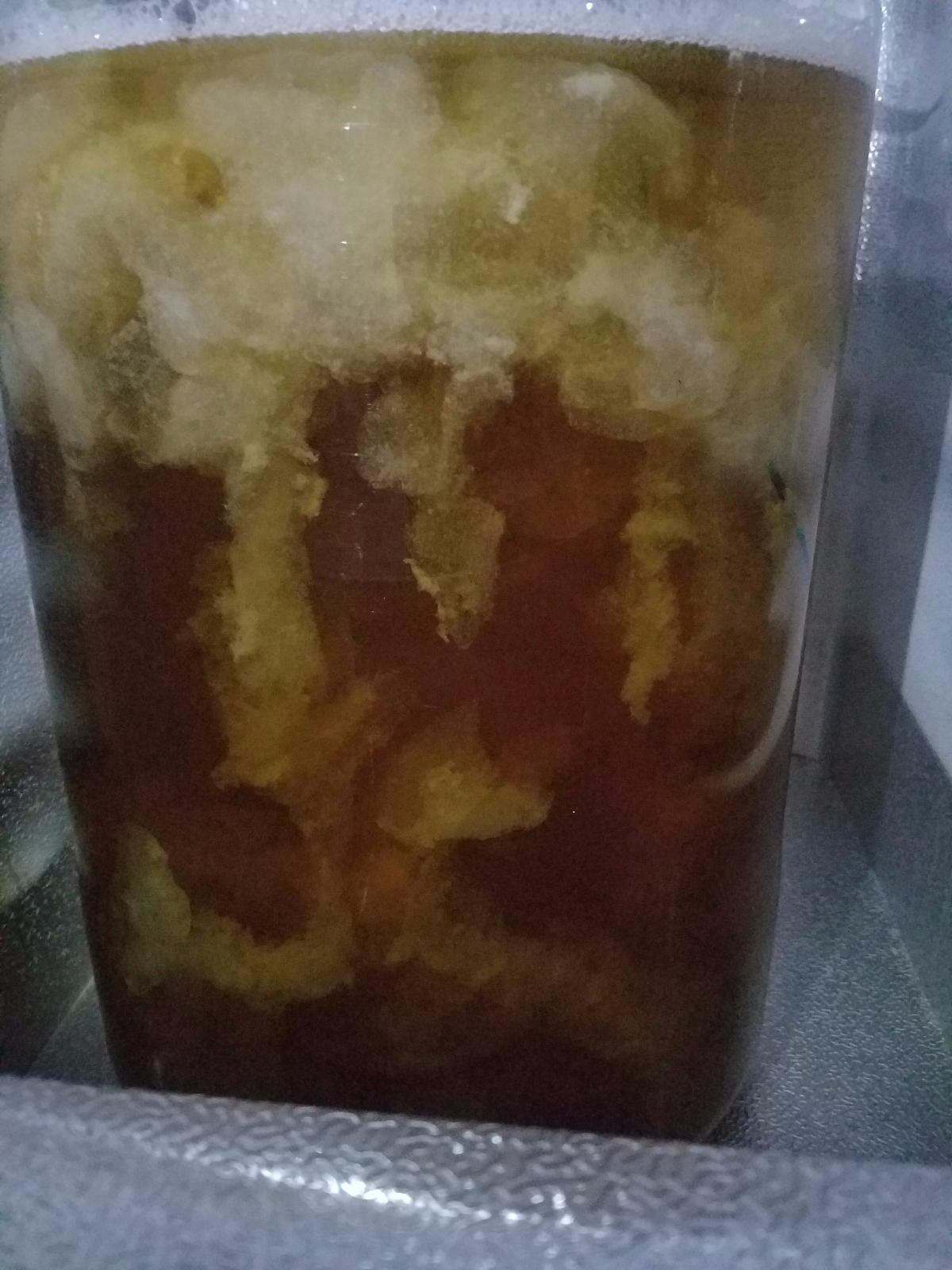jack13
Well-Known Member
I made two changes to my brew day and I'm wondering which is more responsible for the differences I've observed. One change was using a counterflow chiller instead of an immersion chiller (scored a cheap CFC on craigslist) and the other was using Whirfloc instead of my usual Irish moss (LHBS was out of irish moss, which I've used exclusively before today).
After the boil I whirlpooled, as I sometimes do. But I noticed when I drained to the fermenter I was getting a lot more clear wort before the hose started to cloud up (signifying that I'm getting into the trub cone). I tilted the kettle and that super clear wort just kept coming; I never saw any gunk. Later, when I went to clean the kettle, there was a virtually dry trub cone in the middle! Never saw that before.
I also noticed an amount of cold break I've never seen before when taking a hydrometer reading (pictured). And note I've recently made this same beer with the same methods otherwise, so I think I'm making a valid comparison.
I'd have assumed the quicker chilling due to the switch to a CFC was the main reason for these differences. But I also noticed the wort looked more clear than usual even BEFORE I chilled.
Nevertheless, my guess is that the quicker chill (i.e., CFC) was the main reason, but thought I'd see what others thought.
I should mention the CFC took the wort down to about 92F (I'm taking it the rest of the way to 66F in my chest freezer, where I'll ferment it). With my immersion chiiller, it took about 45 minutes for wort to get to a temp like that.
Edit: I guess the cone must have been the whirfloc, but what about the crazy cold break in the picture?

After the boil I whirlpooled, as I sometimes do. But I noticed when I drained to the fermenter I was getting a lot more clear wort before the hose started to cloud up (signifying that I'm getting into the trub cone). I tilted the kettle and that super clear wort just kept coming; I never saw any gunk. Later, when I went to clean the kettle, there was a virtually dry trub cone in the middle! Never saw that before.
I also noticed an amount of cold break I've never seen before when taking a hydrometer reading (pictured). And note I've recently made this same beer with the same methods otherwise, so I think I'm making a valid comparison.
I'd have assumed the quicker chilling due to the switch to a CFC was the main reason for these differences. But I also noticed the wort looked more clear than usual even BEFORE I chilled.
Nevertheless, my guess is that the quicker chill (i.e., CFC) was the main reason, but thought I'd see what others thought.
I should mention the CFC took the wort down to about 92F (I'm taking it the rest of the way to 66F in my chest freezer, where I'll ferment it). With my immersion chiiller, it took about 45 minutes for wort to get to a temp like that.
Edit: I guess the cone must have been the whirfloc, but what about the crazy cold break in the picture?






![Craft A Brew - Safale BE-256 Yeast - Fermentis - Belgian Ale Dry Yeast - For Belgian & Strong Ales - Ingredients for Home Brewing - Beer Making Supplies - [3 Pack]](https://m.media-amazon.com/images/I/51bcKEwQmWL._SL500_.jpg)




















































